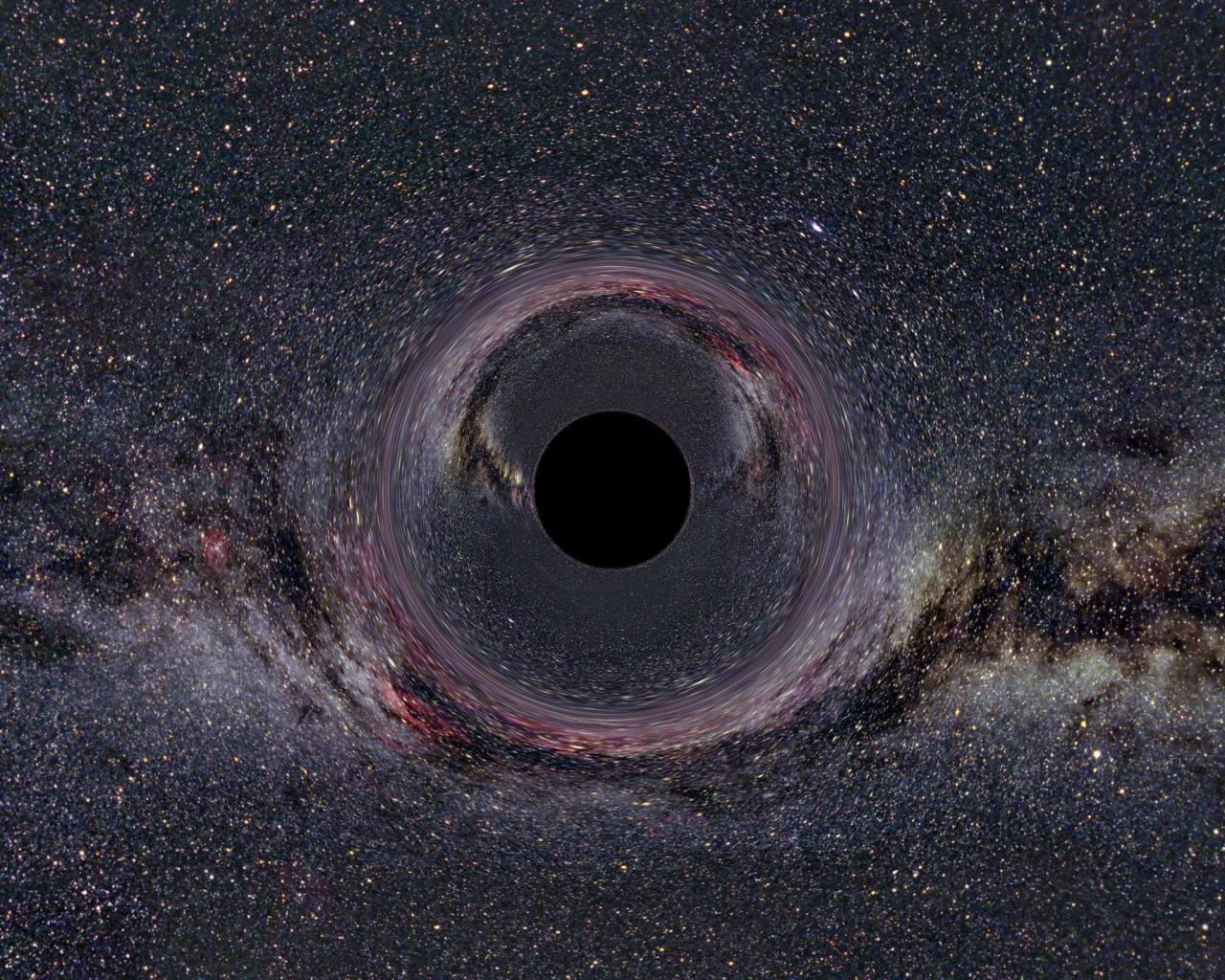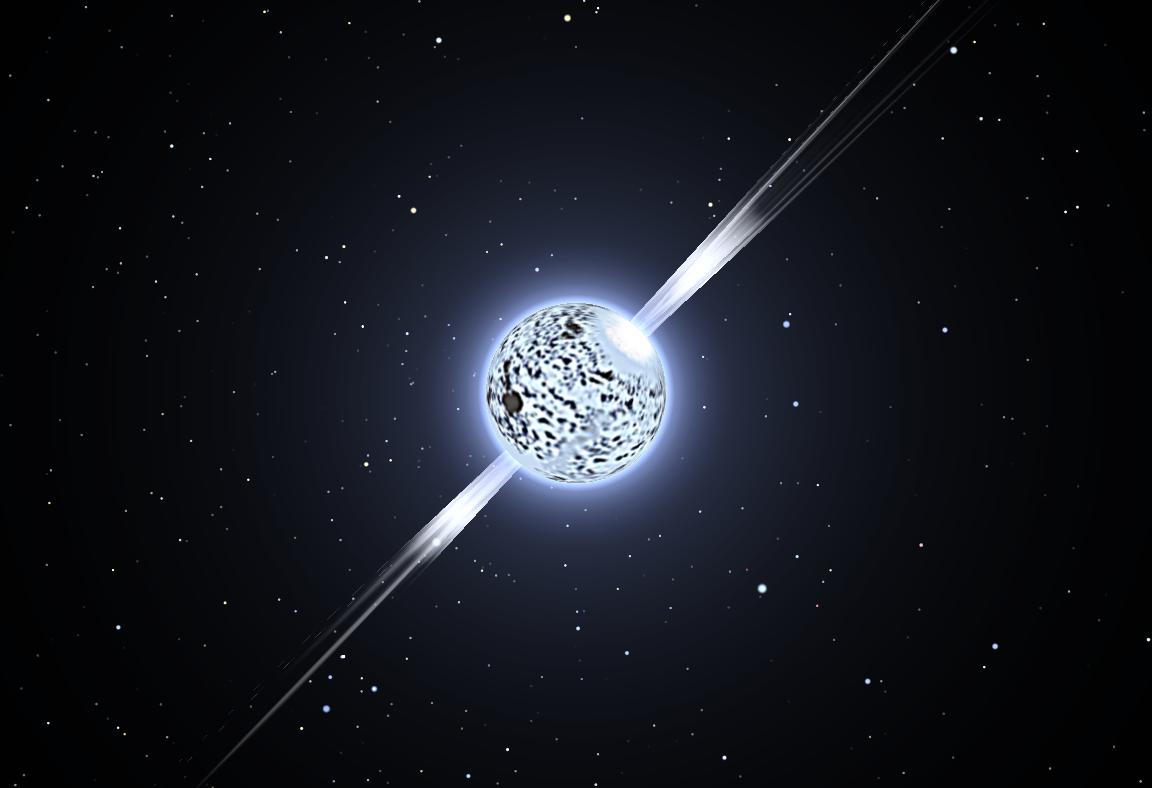 Black hole in the artist's view
Black hole in the artist's viewThe idea that
black holes exist in the Universe, whose age is almost equal to the age of the Universe itself, appeared in the scientific community quite a long time ago. Indeed, there was enough matter in the Universe to form black holes after a very short time after the
Big Bang . However, this is only a hypothesis, which is difficult to prove, because scientists have practically no tools for detecting the original inhabitants of the Universe.
Recently, a group of physicists
proposed an unusual method of searching for ancient black holes. Scientists have suggested that such objects are quite capable of absorbing
neutron stars (formed afterwards, yes). They themselves can not go beyond the limits of gravitational collapse, but the speed of their rotation is sufficient for some of the substance to escape from the embrace of the black hole.
Their assumptions scientists, which were discussed above, issued as an article and published in the Physical Review Letters. A group of researchers consisting of three physicists suggests that under certain conditions heavy elements may go beyond the limits of the gravitational anomaly and that is how they can be detected.
Ancient black holes have two fundamental differences from their younger "relatives". First, an ordinary black hole is formed as a result of the collapse of a massive star. Stephen Hawking in 1971
suggested that the ancient black holes were not formed from stars (they simply did not exist at the initial stage of the Universe formation), but as a result of the gravitational collapse of fluctuations in density fluctuations. Secondly, the mass of ancient black holes can be practically any, equal both to the mass of an ordinary star, and thousands of times greater than the mass of known Supernovae. By the way, according to some scientists, it is the ancient black holes that can be the focus of dark matter, which they are looking for and can not find in the quantities predicted by physicists.
All this is good, but, as mentioned above, it is almost impossible to find such objects without proper tools. We can talk about them, but it is impossible to prove their existence using methods common to astronomy. The only way
to do this is to find traces of absorption of a neutron star by such a black star.

Neutron stars rotate around their axis very quickly, making a complete revolution in milliseconds. Suppose that such an object fell into a black hole. The latter cannot absorb a neutron star immediately and without a trace - the laws of physics impose certain restrictions on the rate of absorption of matter. As a result of the interaction of these two objects, the absorbed star will rotate even faster. And if it is so that a substance that is on the surface of a neutron star near the equator can at a certain moment reach a speed that is enough to go beyond the limits of the gravitational trap. Physicists believe that in this case much of the matter can avoid absorption and go beyond the reach of a black hole.
It is clear that while the substance is in the composition of a neutron star, its state is very different from the composition of ordinary matter. This is, in fact, “tiny” atoms. Therefore, after the ejection of matter tends to go into the usual form, the atoms and the standard structure of matter are restored. Due to the nature of this process, atoms of heavy elements appear. According to the authors of the study, the distribution of heavy elements in the Universe just corresponds to their hypothesis. Scientists conducted a simulation using their assumptions, and received several confirmations of the correctness of their hypothesis. Of course, she has opponents, but there are still more those who supported the calculations of her colleagues.
Moreover, physicists claim that their hypothesis explains many phenomena that modern science cannot explain. These are
fast radio bursts , antimatter in our galaxy and much more. Plus, black holes themselves can account for 10% of that amount of dark matter, which astronomers had previously calculated.
DOI:
10.1103 / PhysRevLett.119.061101